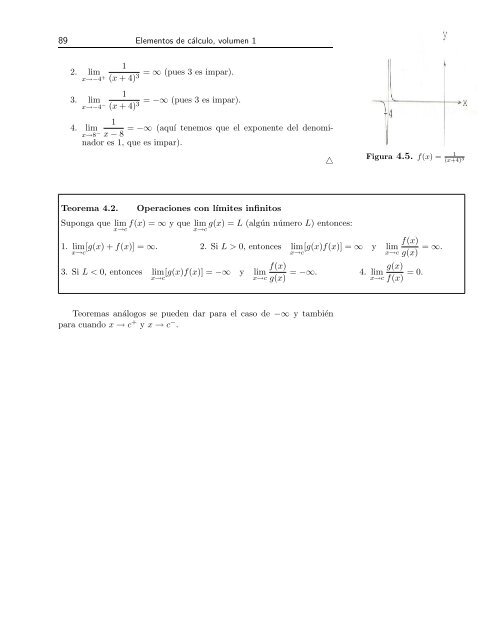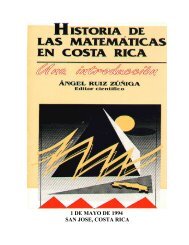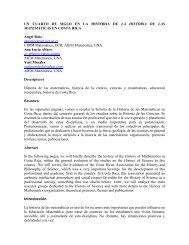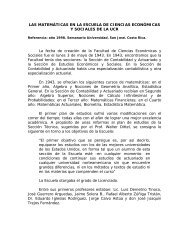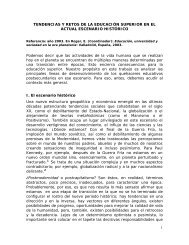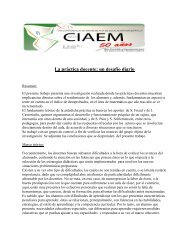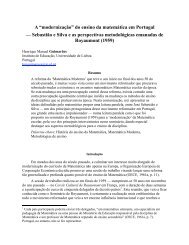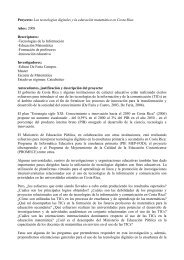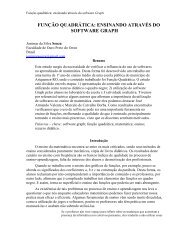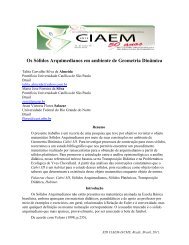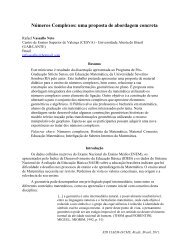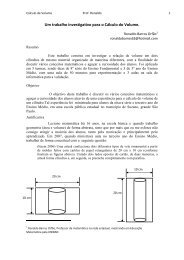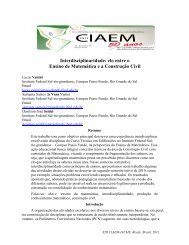You also want an ePaper? Increase the reach of your titles
YUMPU automatically turns print PDFs into web optimized ePapers that Google loves.
89 Elementos de cálculo, volumen 1<br />
2. lim<br />
x→−4 +<br />
1<br />
= ∞ (pues 3 es impar).<br />
(x + 4) 3<br />
3. lim<br />
x→−4 −<br />
1<br />
= −∞ (pues 3 es impar).<br />
(x + 4) 3<br />
4. lim<br />
x→8− 1<br />
= −∞ (aquí tenemos que el exponente del denomi-<br />
x − 8<br />
nador es 1, que es impar).<br />
Teorema 4.2. Operaciones con límites infinitos<br />
Suponga que lim f(x) = ∞ y que lim g(x) = L (algún número L) entonces:<br />
x→c x→c<br />
1. lim[g(x)<br />
+ f(x)] = ∞.<br />
x→c<br />
2. Si L > 0, entonces lim[g(x)f(x)]<br />
= ∞<br />
x→c<br />
y<br />
f(x)<br />
lim = ∞.<br />
x→c g(x)<br />
f(x)<br />
g(x)<br />
3. Si L < 0, entonces lim[g(x)f(x)]<br />
= −∞ y lim = −∞. 4. lim = 0.<br />
x→c x→c g(x) x→c f(x)<br />
Teoremas análogos se pueden dar para el caso de −∞ y también<br />
para cuando x → c + y x → c − .<br />
△<br />
Figura 4.5. f(x) = 1<br />
(x+4) 3


